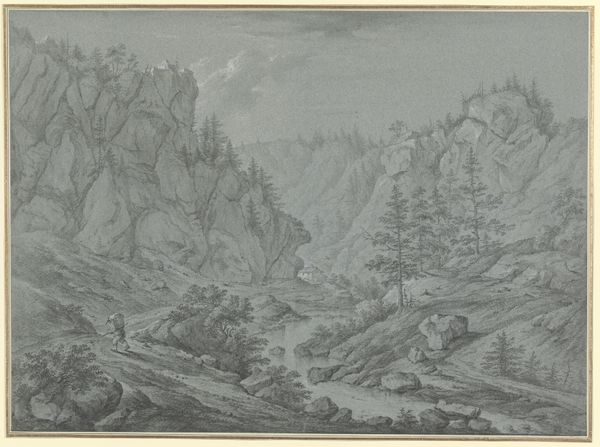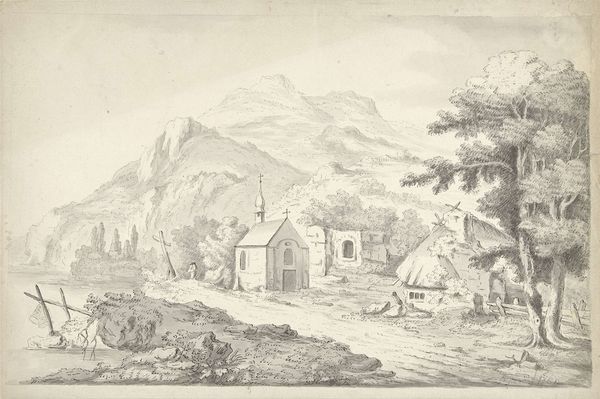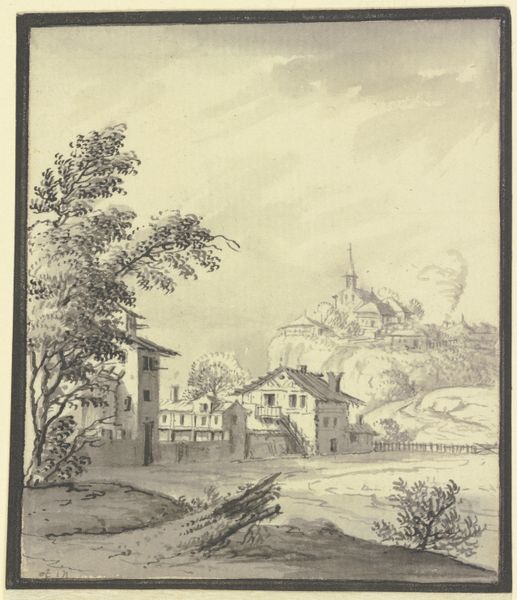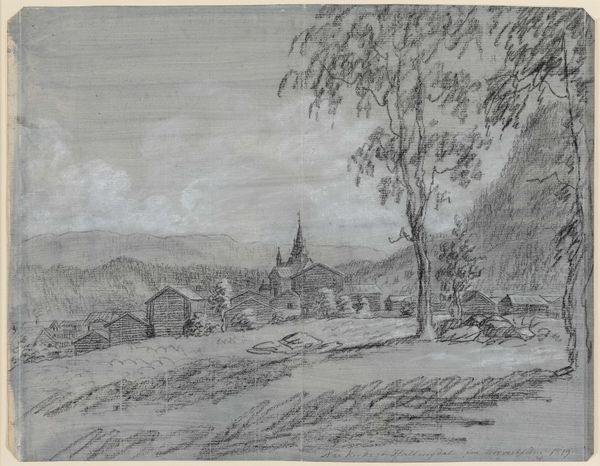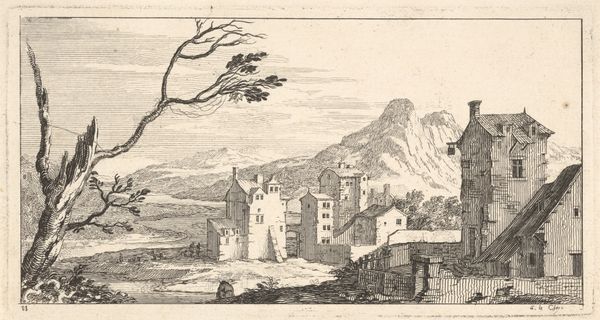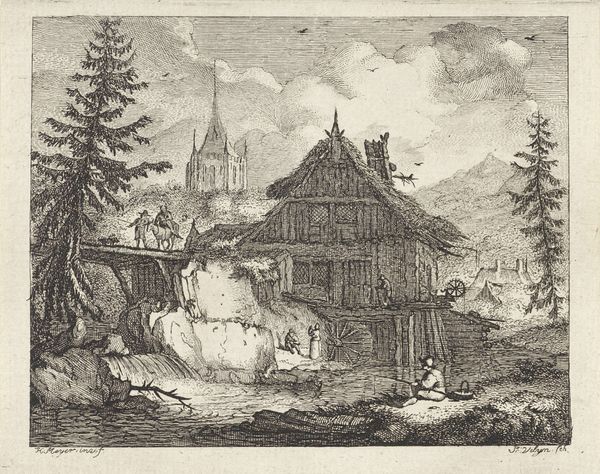
Copyright: Public Domain
Editor: This is "Gebirgstal mit Bauernhäusern (Amsteg im Kanton Uri)," a drawing and etching by Franz Schütz from around 1780, currently at the Städel Museum. There's a real stillness to this scene. The village nestled in the mountains almost seems isolated and untouched. What's your interpretation of it? Curator: That sense of isolation is key. Look at how Schütz portrays this rural community against the imposing backdrop of the Alps. We can consider this work within the burgeoning Romantic movement and its preoccupation with the sublime. How does this landscape contribute to, or perhaps even challenge, notions of national identity in 18th-century Switzerland? Editor: I hadn’t thought of it that way. So the focus shifts from just being a pretty picture to being about cultural and political identity? Curator: Exactly. Ask yourself, who is represented here, and whose story is being told? Are these idyllic depictions reinforcing or subverting existing social hierarchies? What can the absence of certain figures, such as landowners, reveal about the artist's perspective or the intended audience? Consider also, the romanticization of rural life was often used to mask the harsh realities of poverty and labor. Editor: That gives me a lot to consider. I guess I was initially drawn to the aesthetic, but I can see that there's so much more to unpack in terms of historical and social contexts. Curator: Precisely! By viewing it through this lens, we acknowledge art’s participation in the discourse on identity and politics, especially where the construction of landscapes is intertwined with the construction of national narratives. This piece invites critical questioning about the artist's intention and how it connects with contemporary viewers. Editor: I’ll definitely look at landscapes differently now, realizing their possible underlying implications! Curator: And that is why these works still resonate and ignite dialogue about who we are.
Comments
No comments
Be the first to comment and join the conversation on the ultimate creative platform.
